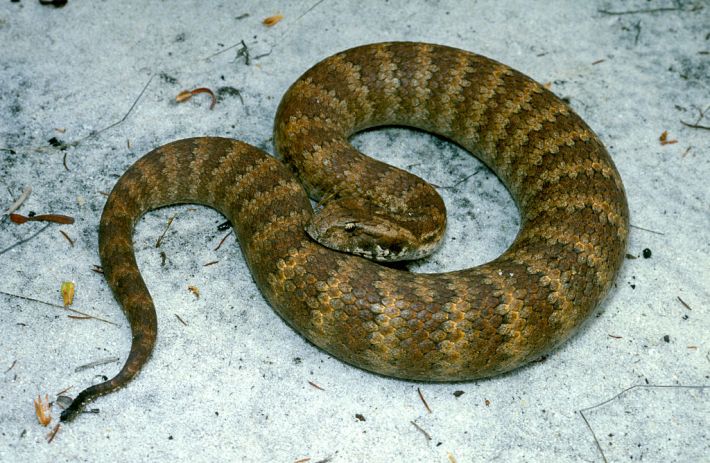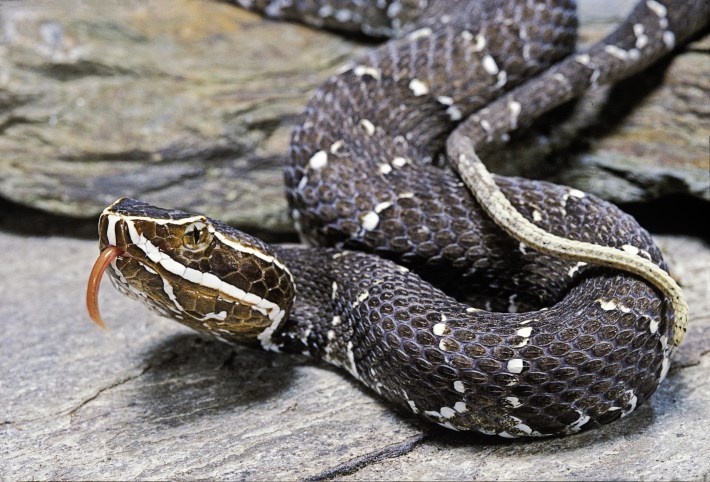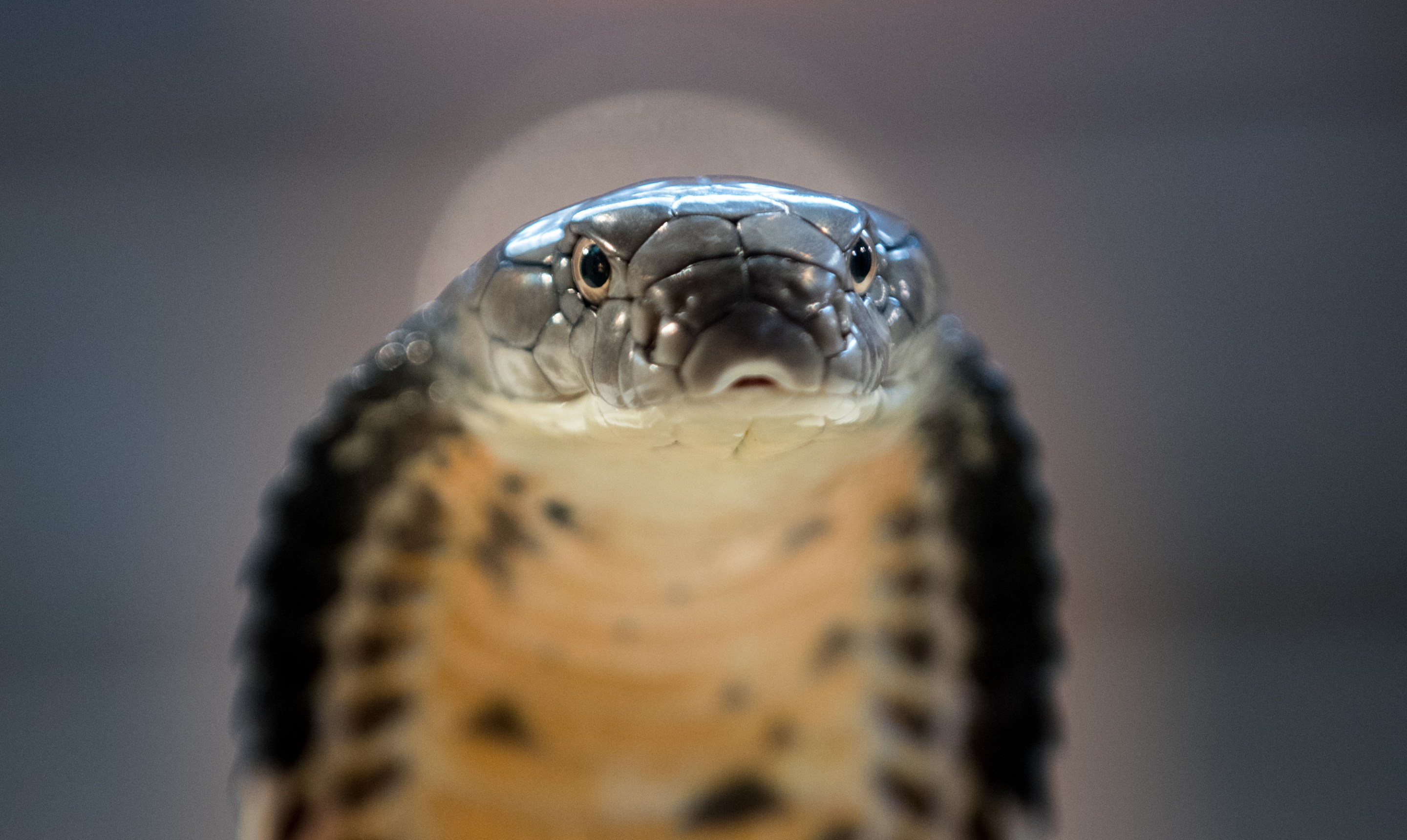The first time Emily Taylor encountered snake hemiclitores—the reptilian version of the clitoris—was in herpetology class. The year was 1998, and the hemiclitores belonged to a rattlesnake that Taylor's professor, the herpetologist Harry Greene, had caught and tubed in the field. Greene pressed down on the snake's tail and the two small bumps of the hemiclitores, normally tucked inside the cloaca, popped out for everyone to see.
In some ways, 1998 was a landmark year for the clitoris. It was also the year the sprawling extent of the human clitoris was described for the first time, in a paper published in a paper in The Journal of Urology, that debunked the longstanding belief "that the clitoris was merely a tiny external nub with little function," said Taylor, a snake biologist and director of the Physiological Ecology of Reptiles Laboratory at California Polytechnic State University. Rather, the human clitoris is a "sprawling underground kingdom of crackling nerves and blood-pumping vessels," science journalist Rachel Gross writes for Scientific American.
This week, a group of researchers have published the first major description of snake hemiclitores in a paper in the journal Proceedings of the Royal Society B. The authors find snake hemiclitores are not unlike our human versions, extending deep beyond the external nubs and encompassing erectile nerves and tissue that may have a role in sensation. "It is no surprise that it took an all-female group of scientists to show that hemiclitores, the squamate reptile version of the clitoris, are extensive in snakes and likely have important functions," said Taylor, who was not involved with the research.

As their names suggests, reptilian hemiclitores (and hemipenes) are not quite the same organs as the mammalian clitoris and penis. The main difference is that the reptiles' genitalia comes in two parts, hence the prefix hemi, as well as the fact that hemipenes often bristle with spines, according to Megan Folwell, a graduate student in evolutionary biology at the University of Adelaide and an author on the new paper. In squamates (lizards, snakes, and worm lizards), the pair of organs emerge from the cloaca. The hemipenes can be adorned with intricate ornamentation, such as protruding spines, hooks, chalices, and cups. Male snakes only use one of their hemipenes during mating, and often prefer their right penis. We know all this because genitalia research has long focused exclusively on males, thanks to the demographics of the scientists who researched them.
When Folwell dug into the literature concerning the hemiclitores of snakes and lizards, she found almost nothing had been written about that organ. And what had been published was an utter mess. "Initially I found papers saying they were vestigial, secondly lost, and if they did exist, they would be to provide more stimulation of the male," Folwell said. That last, egregious assumption appeared in a 1995 paper by herpetologist Wolfgang Böhme, who hypothesized that the hemiclitores of a female monitor lizard exist to "stimulate" the hemipenes of male monitor lizards during intercourse. Hmm!
Chauvinist male scientists of yore aside, the claim that hemiclitores were lost or vestigial in squamates didn't sit right with Folwell. After all, hemiclitores are present in most adult female amniotes except for birds. And many of the papers that claimed to identify snake hemiclitores had actually described the reptile's scent glands, which sit beside the cloaca. Once Folwell realized she could not trust the papers, she turned directly to the snakes. She began dissecting females in her own collection at the South Australian Museum in search of real hemiclitores. She dissected 10 snakes representing nine species, including the common death adders, puff adder, and carpet python. "Every one was like a surprise," Folwell said. "I never knew what it was going to look like before the dissection." For example, the common death adder's hemiclitores are in the shape of a heart.
Folwell showed Patricia Brennan, an evolutionary biologist at Mount Holyoke College and an author on the new paper, what she had found. Brennan is renowned for her research on animal vaginas, but she also dabbles in the clitoris. "I was like, 'Oh my gosh, that's amazing. Those are totally clitorises,'" Brennan said.

The clitoris and penis originate from the same tissue in early development, which has led some people to cast aside the clitoris as an accident of development, Brennan said. "But if that were true, then you wouldn't expect to see these structures conserved and diversified across different species." The sheer diversity of snake hemiclitores may be a sign that the organs has a good deal of function. "The fact that they're not all the same means there's probably been natural selection for adaptions to improve reproduction," Taylor said. "They could play very important roles in snake sex."
The authors "had lots of long conversations around the importance of the clitoris for snake mating and courtship, particularly whether the clitoris might be stimulated," said Jenna Crowe-Riddell, an evolutionary biologist at La Trobe University in Melbourne and an author on the paper. The researchers speculate that functional hemiclitores could encourage longer mating sessions or help females choose which mate's sperm will fertilize her eggs.
But pleasure, too, is a worthwhile end. When the researchers analyzed the tissues of the common death adder's hemiclitores, they found erectile tissue with some blood cells, suggesting the organ may have the ability to engorge with blood if stimulated. "Even though they seem to be small, they also seem to be functional," Brennan said.
In her dissections, Folwell discovered a veritable cornucopia of clitoris diversity. The Mexican cantil viper Agkistrodon bilineatus had "large and conspicuous" hemiclitores that extended 1.2 inches. The Guatemalan milk snake had the tiniest hemiclitores, with a length of 0.1 inches. And the pygmy mulga and Collett's snake had the most unusual feature: pockets, which were essentially empty soft tissue pouches outside the hemiclitores. "That one threw me through a bit of a loop," Folwell said of the clitoral pockets. (Forget a dress with pockets, how about a clitoris with pockets!)

In her research, Folwell came across descriptions of supposed hemiclitores in snakes that were not hemiclitores at all; rather, they were spurious descriptions of the genitalia of intersex snakes. For example, The golden lancehead Bothrops insularis has a remarkably occurrence of intersex snakes with functioning oviducts and hemipenes. In this population, "it is uncommon to have 'true females,'" Folwell said.
The prevalence of intersex animals is another aspect of biology that is often underreported, said Brennan, who encounters intersex creatures all the time in her research. "Right now I have in my lab a rattlesnake vagina that comes from an intersex individual," she said, referring to a specimen with testes and a large, well-developed vagina. In a recent shark dissection with her students, Brennan came across a shark that had testes but no claspers (the external genitalia of male sharks). "I think these things just are everywhere," Brennan said. "We just don't really describe them that often." It's a similar line of thinking that's shoved the clitoris into the proverbial corner for so long.
In the 25 years since Taylor first took notes on the snake hemiclitores, she has become a devoted student of the organ, peeking at hemiclitores to determine the sex of snakes she captures in the field. So here, without any further foreplay, are the hemiclitores of a prairie rattlesnake from one of Taylor's studies— and enjoy the bonus hemipenes below.
In case my clip of a male rattlesnake's hemipenes made anyone feel left out, here is a view of a female's nether regions, showing off her hemiclitori. 🤙 https://t.co/qPot4DYLzY pic.twitter.com/Vy25TvzVa1
— Emily Taylor (@snakeymama) August 25, 2022






